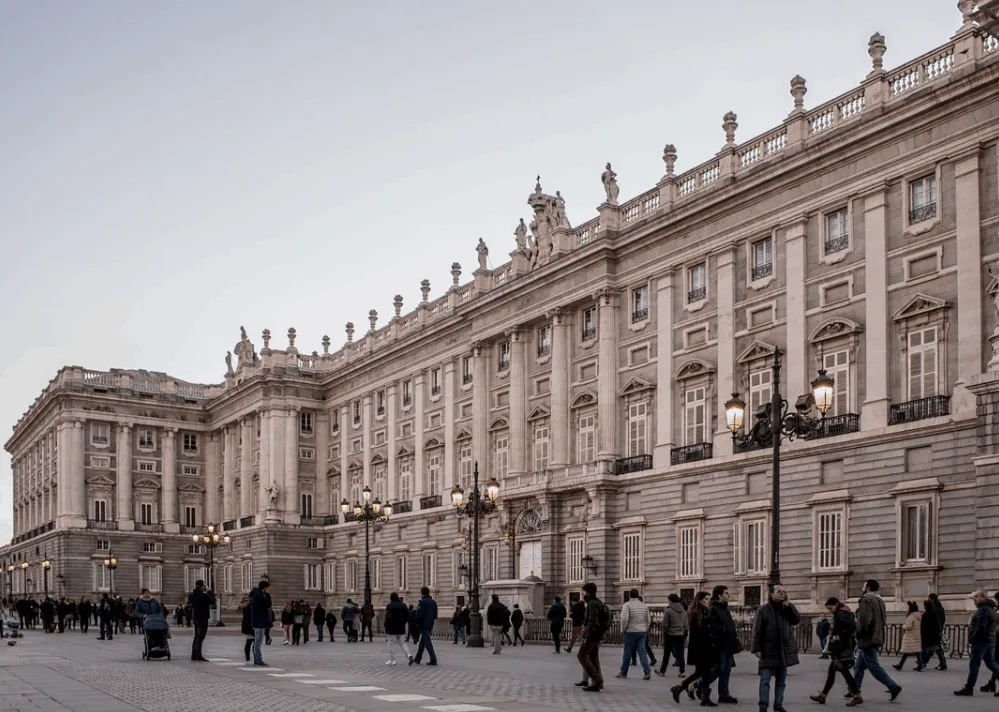Did you know that the largest palace in Europe is located in Madrid, the capital of Spain?
In this post, you’ll discover the ultimate list of Royal Palace of Madrid facts, one of the most amazing palaces in the world!
1. The Royal Palace is located in the heart of Madrid
The Royal Palace of Madrid is located on the western edge of the historic center of the city. It’s situated on the east bank of the Manzanares River and just a few hundred meters to the west of the “Plaza Mayor,” a public square that used to be the center of the city.
The easiest way to access the palace is through the Ópera metro station which is just nearby.

2. It’s the biggest palace in Europe, and it’s huge
The Royal Palace in Madrid is the biggest functioning palace in Europe. It’s literally huge as it consists of a total of 3,418 separate rooms and halls and has a total floor area of 135,000 square meters (1,450,000 square feet).
It has been expanded numerous times over the centuries and was mostly designed in the Baroque and Neoclassical architectural styles.

3. It’s the Royal Family’s official residence, but they don’t live there
One of the most interesting Royal Palace of Madrid facts is that the palace is the official residence of the Spanish Royal family, but they don’t actually live there.
Perhaps they feel it’s way too big as they prefer to live in the smaller Palace of Zarzuela which is located in the suburbs of Madrid. This palace was constructed between 1627 and 1635 and is located just next to yet another palace called the “Royal Palace of El Pardo” which is used to welcome state guests.
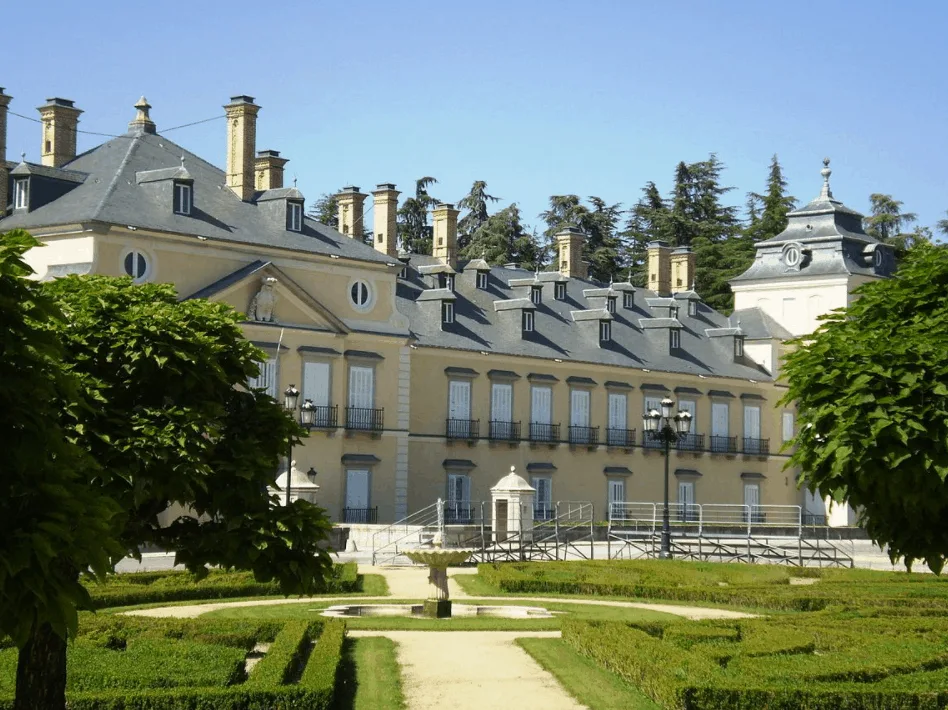
4. The palace was built on the site of a 9th-century Alcázar
One of the most fascinating Royal Palace of Madrid facts is that a stronghold was erected on the site it sits on as early as the 9th century. It was Muhammad I, Umayyad Emir of Cordoba who built an Alcázar there between the years 860 and 880.
The Moors were eventually driven out in the 11th century and the original stronghold served its defensive purpose throughout the Middle Ages.

5. Emperor Charles V seriously extended the Palace
The first serious expansion that transformed the medieval castle into a massive palace was during the reign of Holy Roman Emperor Charles V (1500-1558), starting in 1537.
King Philip II eventually made Madrid the capital of the country in 1561 and his son, King Philip III, added the massive southern façade to the palace between 1610 and 1636.
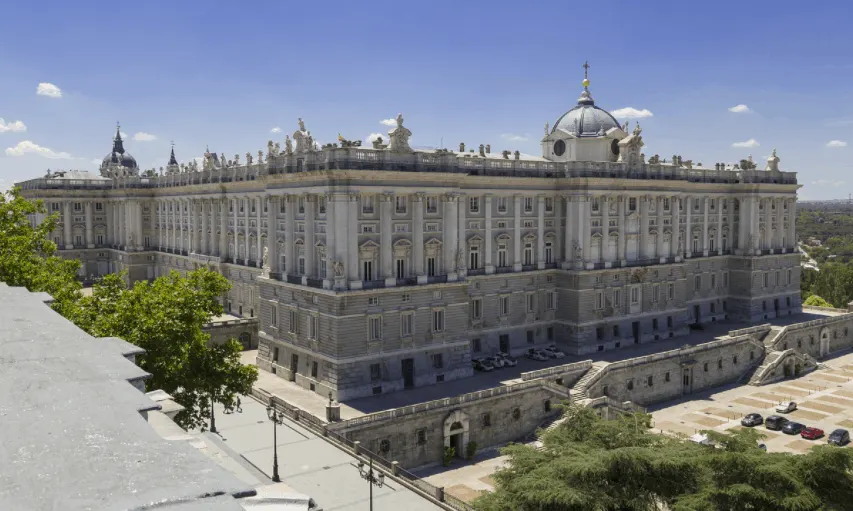
6. The old Alcázar was completely demolished by a fire in 1734
The palace holds a lot of valuable art, and some pieces were destroyed by an immense fire starting on Christmas Eve of the year 1734. The fire raged for 4 days and destroyed the old Alcázar.
One of the most famous paintings in Spain named “Las Meninas“, painted by the ultimate artist of the Spanish Golden Age named Diego Velázquez, was saved by tossing it out of one of the palace’s windows, along with multiple other of his works.
Because of this, the painting can still be admired at The Prado Museum in Madrid.
7. The current palace was constructed between 1738 and 1755
Shortly after this incident, most of the palace was rebuilt and again seriously expanded. Italian architect Filippo Juvarra was hired to design a palace of epic proportions based on the design of the Palace of Versailles near Paris.
Sicilian architect Francesco Sabatini continued the work in the year 1760 and is responsible for the Neoclassical style of the palace we see today.

8. The palace was continuously inhabited from 1764 until 1931
King Charles III was the first King to occupy the newly renovated and expanded palace in the year 1764. He would be followed by multiple other monarchs, all the way to King Alfonso XIII ho lived in the palace until 1931.
The only other person to live permanently in the palace was the President of the Second Republic, Manuel Azaña, albeit just briefly between 1936 and 1939.

9. The Plaza de la Armería dates back to the year 1553
One of the most remarkable spaces outside the palace is called the Plaza de la Amería. This large square dates back to the year 1553 as it was King Philip II who built Royal Stables in this area.
The current square was remodeled back in 1892 and it faces the Almudena Cathedral which was commissioned by King Alfonso XII to house the remains of his wife Mercedes of Orléans.
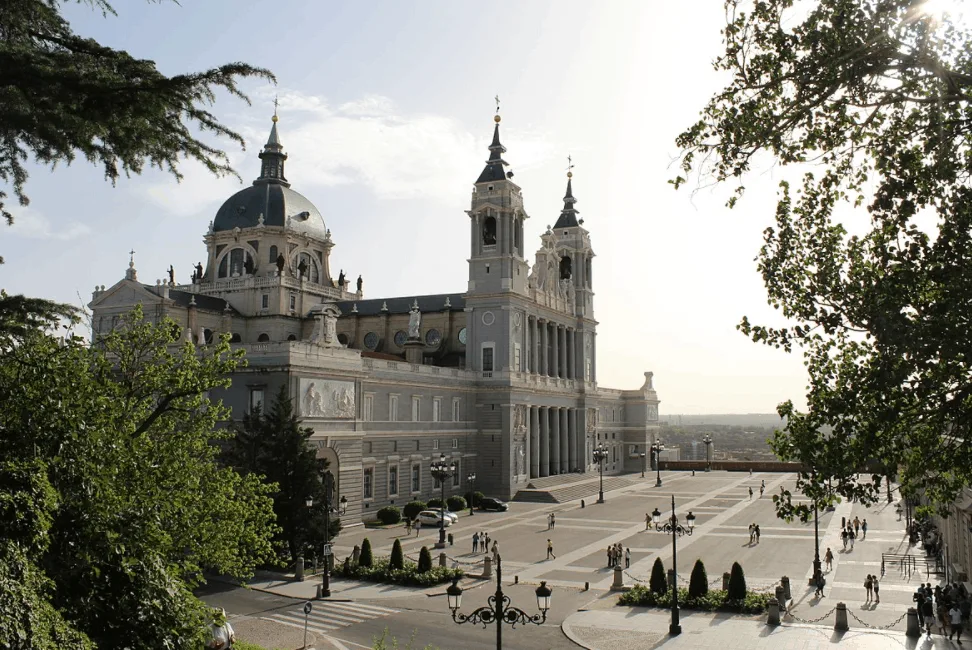
10. The Plaza de Oriente faces the Teatro Real and contains the “Gothic Kings”
The Plaza de Oriente is another square and park that faces the east side of the palace and connects it with the Teatro Real, the Opera House of Madrid.
This Plaza is divided into three separate parts:
- The Central Gardens
- The Cabo Noval Gardens
- The Lepanto Gardens
The most prominent feature of this plaza is the collection of sculptures depicting 5 Visigoth rulers and 15 rulers of the early Christian kingdoms during the Reconquista. These sculptures are referred to as the “Gothic Kings.”
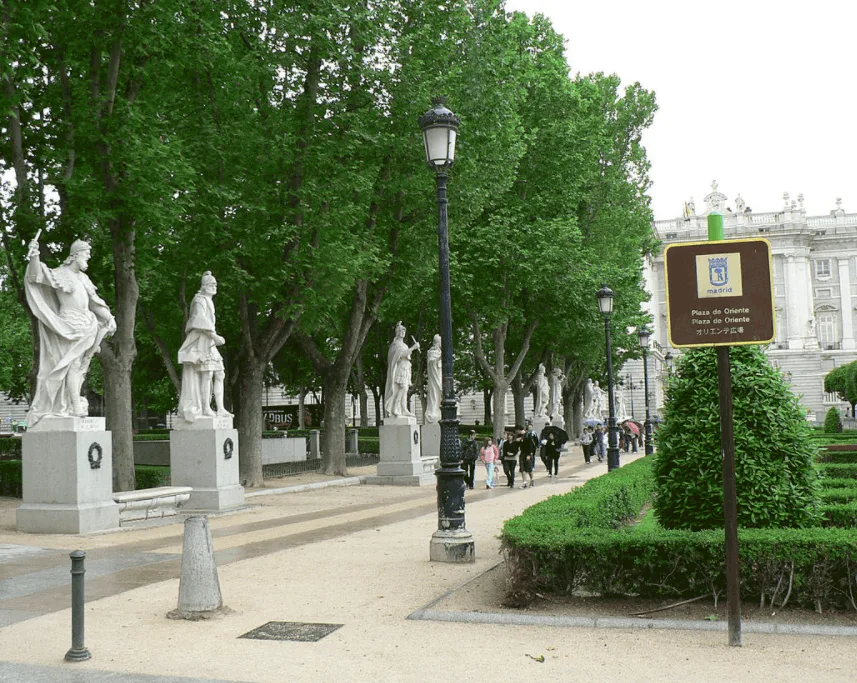
11. The “Campo del Moro” gardens are named after an event in the year 1109
The largest gardens of the palace are referred to as the “Campo del Moro.” These are located to the west of the palace and were designed in the Romanticist style and contain various types of vegetation and fountains.
One of the most intriguing Royal Palace of Madrid facts is that the reason these gardens are named Campo del Moro is that Muslim leader Ali ben Yusuf camped here with his troops in the year 1109 while trying to take back Madrid after the Christian Reconquista.

12. The Sabatini Gardens are named after an architect who designed the palace stables
One of the most prominent architects of the palace was the Italian Francesco Sabatini. He was the one who designed Royal Stables that were located in the area now occupied by the Sabatini Gardens.
These gardens contain a large rectangular pool surrounded by 4 fountains and were named after the man who once designed the stables over 2 and a half centuries ago.
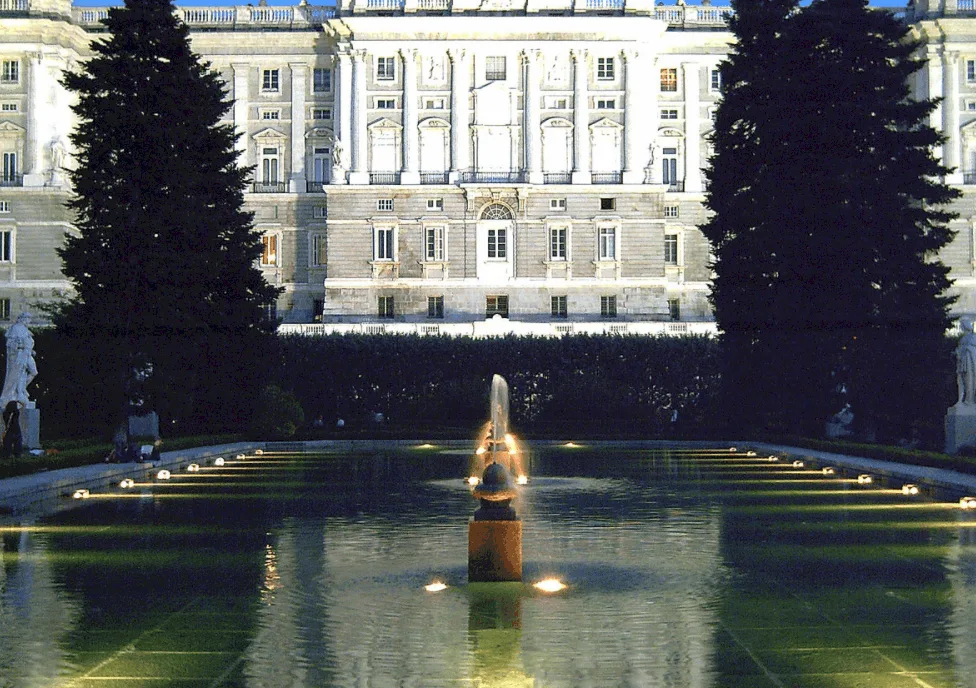
13. The Grand Staircase contains a magnificent fresco
Sabatini didn’t just design the Royal Stables, he also had a strong influence on the interior of the palace. One of the most fascinating elements he designed was the Grand Staircase of the palace in 1789.
He designed the staircase in such a way that its ceiling could be decorated with a large fresco. This fresco was painted by Italian Rococo painter Corrado Giaquinto and represents “Religion Protected by Spain.”
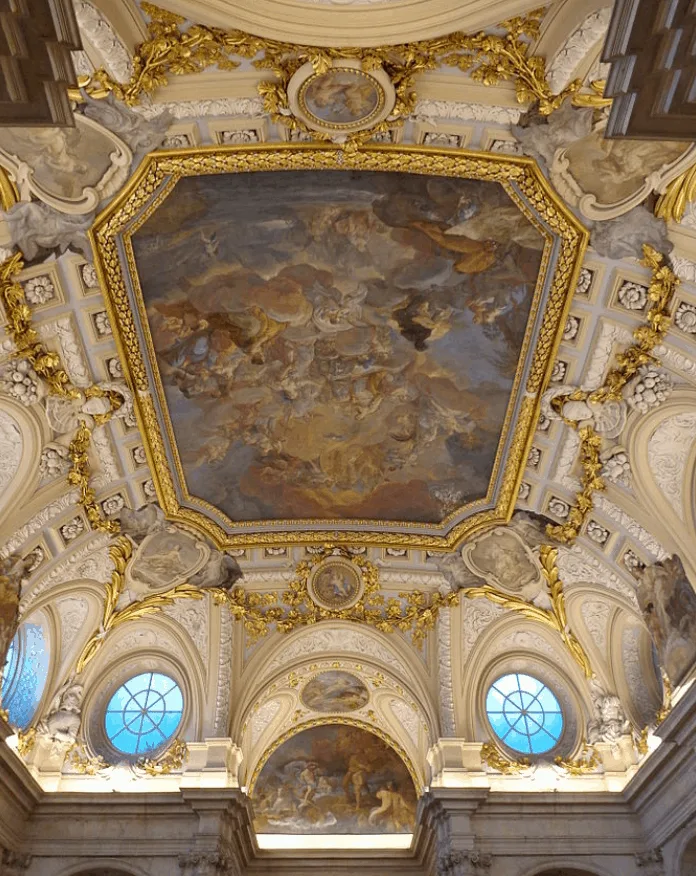
14. The Royal Pharmacy of the Palace looks quite amazing
The Royal Pharmacie was created during the reign of Philip II in the 16th century and still fulfills its duty for the Royal Family until today.
The collection includes some of the most magnificent 18th and 19th-century pottery from the Talavera de la Reina pottery in Toledo.

15. The Royal Armory contains pieces dating back to the 13th century
One of the most astounding Royal Palace of Madrid facts is that it houses one of the best armories in the world, and only the Royal Armory of Vienna can compete with its collection.
It houses pieces that date back to the 13th century and displays numerous pieces made for Kings Philip II and Charles V by some of the most renowned European armors at that time.
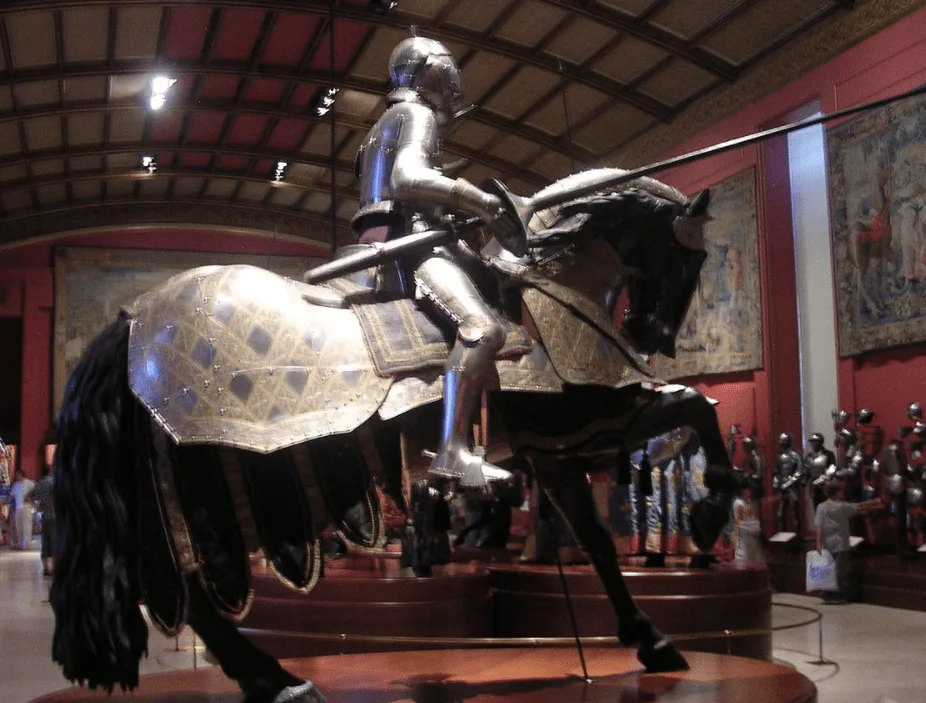
16. The crown and scepter of Charles III are held in the Palace
The Crown Room is one of the most important rooms in all of the palace, and that means something considering there are a total of 3,418 rooms!
The reason is that it holds the original Crown and Scepter of King Charles III.
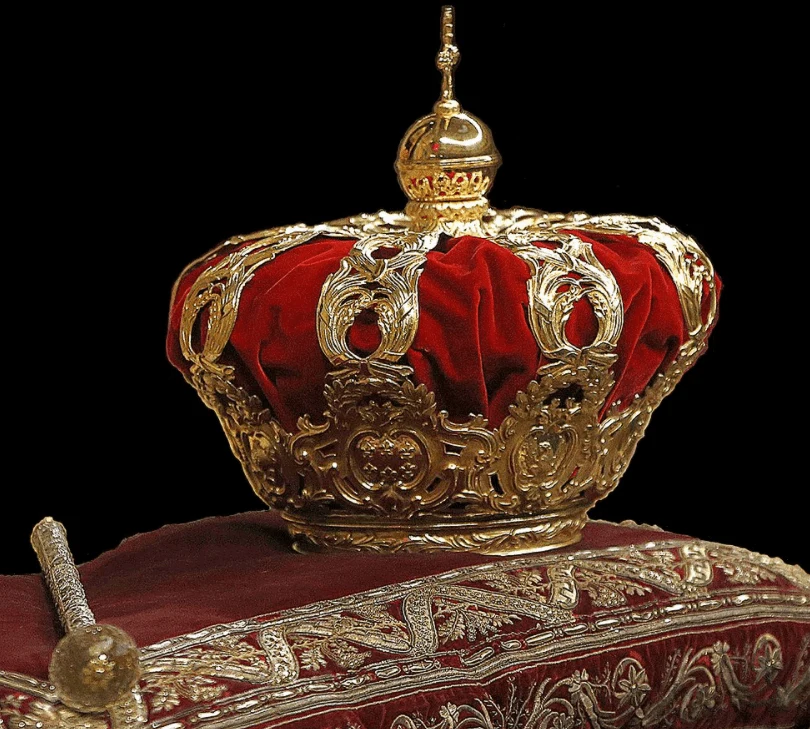
17. Many rooms inside the Royal Palace can be visited by tourists
So can you actually take a look inside this amazing palace?
Sure you can!
Many of the rooms are open for tourists to visit. The only days the palace is closed is when it’s being used for state functions, as it’s still functional for ceremonial purposes.
The palace is one of the most popular tourist attractions in Spain and is visited by about 1.5 million people every single year!
